Igniting More Protection Solutions
Proactive fire protection group steps up global advisory role. See page 14


MAY/JUNE 2024 www.hpac.com History Corner: Women in Engineering See page 6
Refrigerants Primer 8 O.R. Climate Wars 20 BOILER 2024 Wraps 24
Fresh Engineering. Elevated Ventilation.
Greenheck's comprehensive line of Dedicated Outdoor Air Systems, available in models RV, RVE, and RVC, deliver up to 100% fresh outdoor air and industry-leading features that are pre-engineered and factory-tested to meet the demands of your projects. Offering airflow up to 18,000 cfm, cooling, heating, and energy recovery options, Greenheck’s DOAS products elevate ventilation performance.
Specify with Confidence. Specify Greenheck.


©2024 Greenheck

spectacular performance


Tackle any install with our complete line
Rheem® makes it simple to spec solutions that deliver the performance your customers want. Designed with our 360°+1 advantage, Rheem Commercial units are configurable to meet the needs of each application and feature industry-leading innovations like the latest microchannels and patent-pending heat exchanger technology. Choose Rheem for flexible, solutiondriven equipment—for new construction, retrofit and replacement projects. Visit RheemCommercial.com or scan to learn more

360° INSTALLABILITY ® • 360° SERVICEABILITY ® • 360° PERFORMANCE ®
heating
cooling
of
&
equipment
RheemAir RheemAir Rheem_Air Rheem Manufacturing
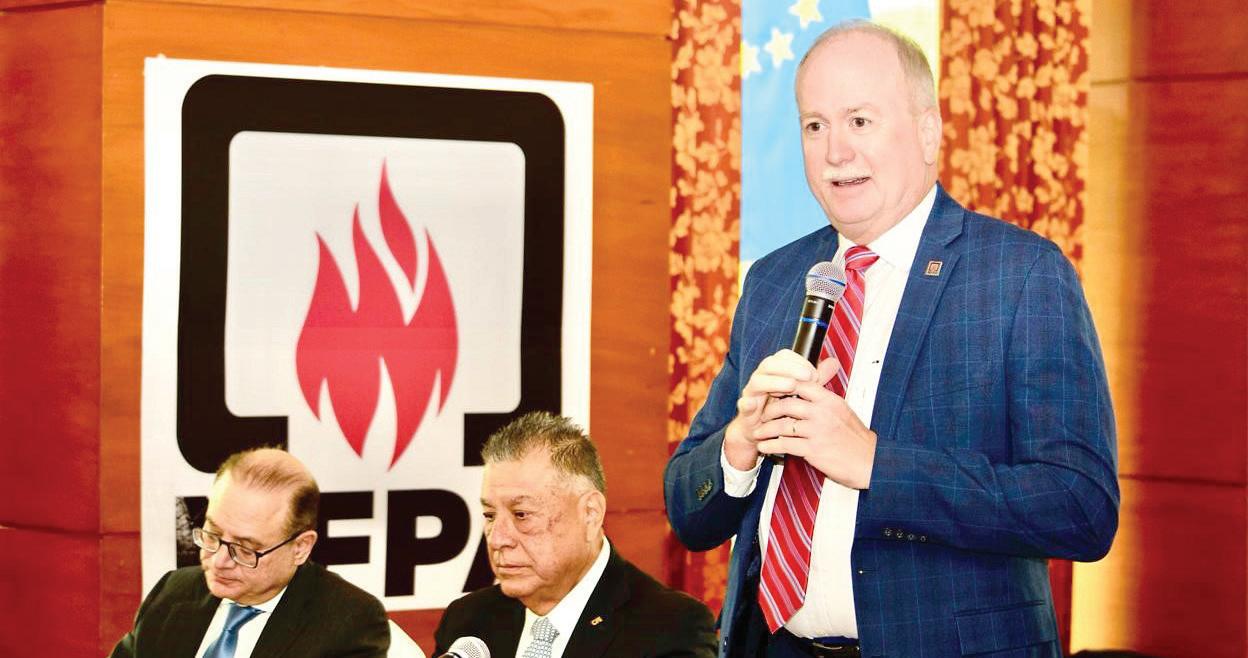
Controlling the environment in hospital operating rooms doesn’t have to be an uncomfortable fight that is always lost.

Boiler manufacturers on Rocky Mountain ‘high’ after bigger, better, ‘total supply chain’ conference and expo in Colorado.

Ahead of the National Fire Protection Association’s annual meeting, its chief joined us to discuss the group’s new global strategy to be a more proactive industry advisor.
By Rob McManamy



Gaining Investors, Momentum. By Larry Clark
Study
HPAC Engineering (USPS Permit 464-930, ISSN 0039-0895 print, ISSN 1930-8957 online) is published 6x a year (Jan/Feb,,Mar/Apr , May/Jun, Jul/ Aug, Sep/Oct, Nov/Dec) by Endeavor Business Media, LLC. 201 N Main St 5th Floor, Fort Atkinson, WI 53538. Periodicals postage paid at Fort Atkinson, WI, and additional mailing offices. POSTMASTER: Send address changes to HPAC Engineering, PO Box 3257, Northbrook, IL 60065-3257. SUBSCRIPTIONS: Publisher reserves the right to reject non-qualified subscriptions. Subscription prices: U.S. ($ 111.25); Canada/Mexico ($ 123.75); All other countries ($148.75). All subscriptions are payable in U.S. funds. Send subscription inquiries to HPAC Engineering, PO Box 3257, Northbrook, IL 60065-3257. Customer service can be reached toll-free at 877-382-9187 or at HPACengineering@omeda.com for magazine subscription assistance or questions. Printed in the USA. Copyright 2024 Endeavor Business Media, LLC. All rights reserved. No part of this publication may be reproduced or transmitted in any form or by any means, electronic or mechanical, including photocopies, recordings, or any information storage or retrieval system without permission from the publisher. Endeavor Business Media, LLC does not assume and hereby disclaims any liability to any person or company for any loss or damage caused by errors or omissions in the material herein, regardless of whether such errors result from negligence, accident, or any other cause whatsoever. The views and opinions in the articles herein are not to be taken as official expressions of the publishers, unless so stated. The publishers do not warrant either expressly or by implication, the factual accuracy of the articles herein, nor do they so warrant any views or opinions by the authors of said articles.

2 HPAC ENGINEERING MAY/JUNE 2024 Cover: Photo 51202535 | System © Eduard Darchinyan | Dreamstime.com May/June 2024 Volume 96 • Number 3 FEATURE 20 Battling Climate Inside the O.R.
By David Schurk,
LEED
BOILER SYSTEMS ENGINEERING 24 BOILER 2024 Delivers, ABMA Now Looks Ahead
ES, CEM,
AP, CDSM, SFP
25 ABMA Promotes Jayson to New VP Role NEWS & NOTES 8 What You Need to Know About the Refrigerant Transition Now Sweeping the Nation
By Rob McManamy
Erdman gives a short primer on the ongoing refrigerants upheaval. By Eric
10 Survey: A/E Firms Foresee Stability, More A.I. Use
Greenheck’s Eric
Erdman
economy
new
help with worker shortages. COVER STORY: Advancing Fire Safety, with NFPA’s
of 652 engineering and architecture firms finds cautious optimism on
and a growing embrace of
technologies to
Jim Pauley
DEPARTMENTS 6 Editor’s Notes Women Still Marching Forward By Rob McManamy 27 New Products 30 Marketplace 32 Clark’s Remarks Direct
Air Capture
20 24 8 Contents 14

From the world’s #1 air conditioning company, discover a new level of technology, comfort, and sustainability!

Daikin continues its tradition of providing localized HVAC solutions for the North American market with a comprehensive VRV lineup engineered for commercial application performance and flexibility. The Daikin VRV EMERION offers a broad range of indoor model application flexibility for both heat pump as well as heat recovery systems with simultaneous heating and cooling.

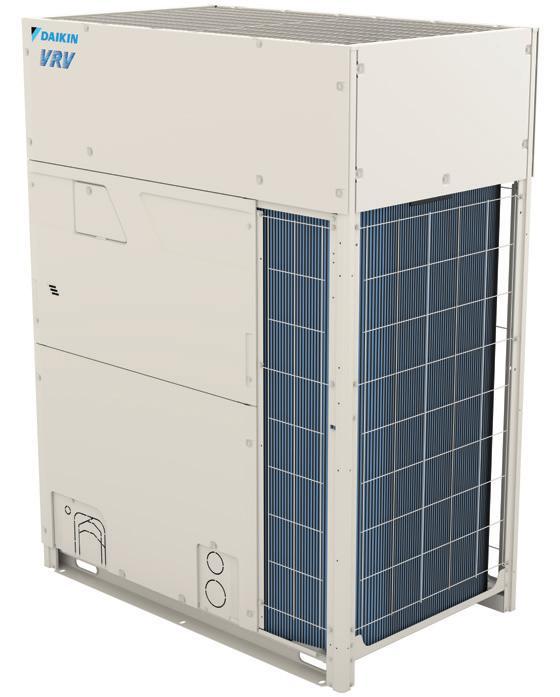



Daikin HERO Simple Edge connects VRV systems to Daikin HERO Cloud Services for remote monitoring.
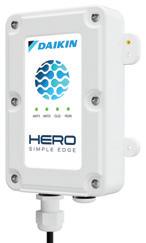

DISCOVER MORE AT: WWW.VRVEMERION.COM
HPAC ‘On The Air’: ASHRAE’s Next Generation, with YEA’s Top Leaders *NEW PODCAST* The challenges facing young engineers today may be more complex than ever, but our guests this month reassure us that the energy, skills, and organization are coming together to meet them head on. www.hpac.com/21283852

MEMBERS ONLY WEBINARS

NEW WEBINAR: A.I., Drones, Digital Twins and You!
ICYMI *NOW ON DEMAND*
MEMBERS ONLY EXCLUSIVES
NEW eBOOK: The Best of Ken Elovitz, P.E.
An Engineer’s Notebook, 2021-2024. Dive into this collection of useful professional advice, laced with helpful legal acumen. www.hpac.com/55020330

FEELING SOCIAL?

EDITORIAL OFFICE
8001 Lincoln Ave. • Suite 720 Skokie, IL 60077 www.hpac.com
EXECUTIVE TEAM
CEO: CHRIS FERRELL
PRESIDENT: JUNE GRIFFIN
COO: PATRICK RAINS
CRO: PAUL ANDREWS
CHIEF DIGITAL OFFICER: JACQUIE NIEMIEC
CHIEF ADMINISTRATIVE AND LEGAL OFFICER: TRACY KANE
EVP, GROUP PUBLISHER –BUILDINGS/LIGHTING/DIGITAL INFRASTRUCTURE: TRACY SMITH
EDITORIAL CONTACTS
MIKE EBY Group Editorial Director meby@endeavorb2b.com
ROB MCMANAMY Editor-in-Chief rmcmanamy@endeavorb2b.com
DAVID ECKHART Art Director deckhart@endeavorb2b.com
SALES CONTACTS MIDWEST
BILL BOYADJIS 973-829-0648 bboyadjis@endeavorb2b.com
SOUTH & WEST
RANDY JETER 512-263-7280 • Fax: 913-514-6628 rjeter@endeavorb2b.com
EAST BRIAN SACK 732-629-1949 bsack@endeavorb2b.com

HPAC 2024: Our May Quiz!
*SPRING FINALS* Test your engineering acumen with eBook author Ken Elovitz. Take his quiz! Win prizes! www.hpac.com/55021368
Recorded May 9, this Oracle Industry Lab presentation takes a deep dive into the technologies transforming our jobsites! Sign in & watch! www.hpac.com/21285224 Follow
WEST ELLYN FISHMAN 949-239-6030 efishman@endeavorb2b.com
CLASSIFIEDS/INSIDE SALES
STEVE SUAREZ 816-588-7372 ssuarez@endeavorb2b.com
DIRECTOR OF SALES JOE AGRON 941-200-4778 jagron@endeavorb2b.com
LIST RENTAL SMART REACH sr-assets@endeavorb2b.com effective PRODUCTION AND CIRCULATION
RITA FITZGERALD Senior Production Manager rfitzgerald@endeavorb2b.com
DEANNA O’BYRNE Ad Services Manager dobyrne@endeavorb2b.com
JAMES MARINACCIO Audience Marketing Manager jmarinaccio@endeavorb2b.com
TERRY GANN Classified Ad Coordinator tgann@endeavorb2b.com


4 HPAC ENGINEERING MAY/JUNE 2024
MEMBERS ONLY PODCASTS
us on Twitter at @HPACEng, as well as our sister publications, @Contractormag, and @ContractingBiz. Retweet our up-to-date content, send comments, questions. Expand your world of engagement with us, at no extra charge! Copyright 2024 Endeavor Business Media, LLC All Rights Reserved
quantic69/iStock/Getty Images Plus nimis69/E+/Getty Images Plus
ASHRAE

High-Efficiency Meets High Performance
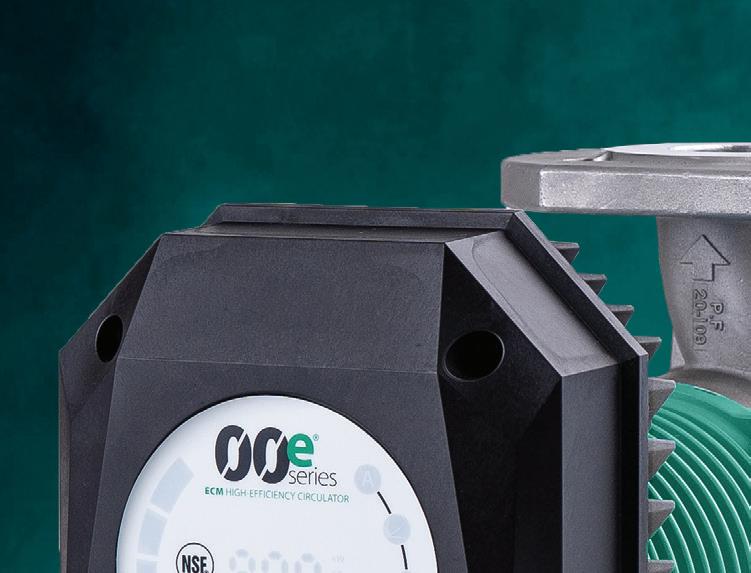
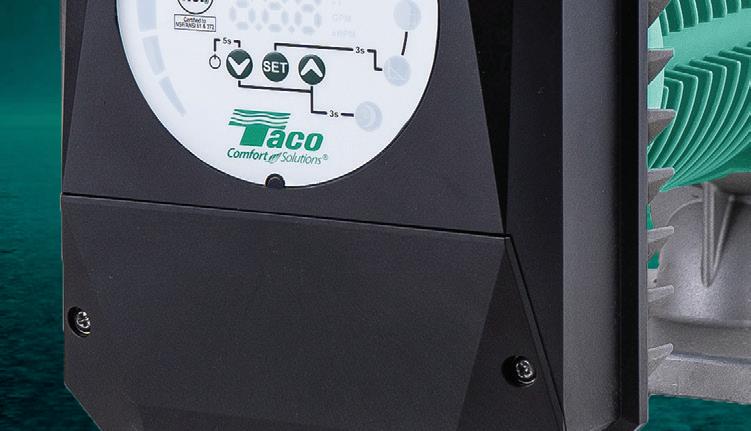




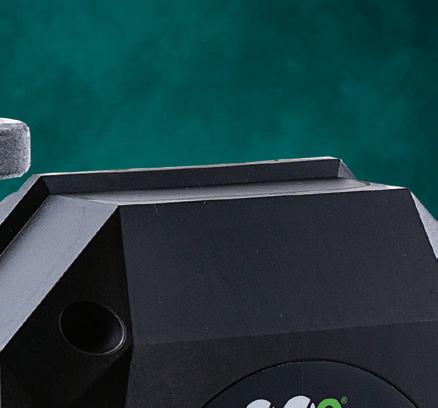



The VR Series raises the bar for high-efficiency, high performance ECM circulators. With a wide range of low, medium, or high head options, these easy-to-use ECM circulators are the perfect choice for HVAC, hot water recirculation, and NSF commercial hot applications.
Scan this code to learn more about what the VR Series can do!


• Easy-to-program pump interface with real-time feedback – reduces setup time
• Modbus, BACnet, 0-10Vdc & Pulse Width Modulation (PWM) - all standard!
• 1∕3 HP to 2 HP; 62 feet max head, 320 GPM max flow
00e® VR Series High-Efficiency ECM Circulators
www.TacoComfort.com
Women Still Marching Forward
This June 23rd marks the 10th anniversary of the first International Women in Engineering Day, which was started by the Women’s Engineering Society in the United Kingdom to celebrate its 95th anniversary.
In this, HPAC Engineering’s own 95th year, we honor that progress with our June podcast, where we chat with Nancy Kohout, P.E., chair of the upcoming Women in ASHRAE Leadership Symposium, set for Chicago this September. That conference feels both appropriate and long overdue in 2024.
But frankly, women’s progress in this industry, as well as in broader society, has been nothing if not marked by contradictions, fits and starts over the last century. How so?
Well, in 1916, Margaret Ingels became the first woman in the world to earn a degree in Mechanical Engineering. A year later, she and Helen Innis became the first female members of ASHRAE’s forerunner, the American Society of Heating and Ventilating Engineers. Recall, at that time, U.S. women still did not have the right to vote. That right would not come until three years later, when it was enshrined in the 19th Amendment.
More than a century later, however, ASHRAE, itself, has had just three female presidents in its 130-year history, including Ginger Scoggins, P.E., whose term concludes this June. Of course, that still puts the Society well ahead of the pace of the nation, which has yet to break the glass ceiling in the Oval Office, and that streak is nearing 250 years!
Today, as young women in the U.S. find themselves re-litigating fights for rights that most thought their mothers and grandmothers had already secured, it is worth appreciating the progressive momentum that is still relatively new to this industry. Within my lifetime, for example, in the pages of this magazine and our rivals, women mostly appeared in advertisements and occasional pictures and stories from industry conventions, noting the activities of various Women’s Auxiliary groups.
But women are “auxiliary” no longer.
Still, there are other challenges. “I sometimes find I am leading meetings where I am the only woman in the room,” says
ASHRAE’s Kohout on HPAC On The Air “In that situation, not only do I have to be technically capable and competent, but for a woman, there’s also an extra lift. I have to be warm. I have to be caring. I have to soften things with humor. I would love to see us not expect that someday. But it is what it is and it’s still there.”
According to Kohout, a principal and mechanical practice lead at SmithGroup in Chicago, “A pivotal way for engineering culture to help close its well-documented gender gap is for more women to emerge as organizational leaders and as mentors for the next generation of female engineering professionals.”
That is the goal of this fall’s symposium.
But ASHRAE is far from the only industry group increasing its focus on women this year. In May, the American Boiler Manufacturers Association convened its first Women In the Boiler Industry (WIBI) meeting at BOILER 2024 in Denver. Meanwhile, the U.S. Commerce Dept. launched the Million Women In Construction Community Pledge, which already has garnered support from seven large industry contractors: Baker Construction; Gilbane Building Co.; Mortenson; McKissack & McKissack; Power Design; and Shawmut Design and Construction.
“Right now, women make up less than 11% of jobs in construction and only 4% in skilled trades,” said Commerce Secretary Gina Raimondo. “If we’re going to meet this moment, we need more women in construction, and we need an industry-wide commitment, which is why I’m calling on everyone — contractors, labor unions, training organizations — to sign on to the Pledge.”
According to the American Society of Mechanical Engineers, women currently make up 14% of U.S. engineers. For perspective, the National Society of Professional Engineers says that total was just 1% in 1963. So, the last half century really has seen considerably more change than the previous half. But don’t be surprised now if that pace accelerates exponentially in the years to come.
And frankly, it’s hard to believe that our industry won’t be the better for it.
EDITORIAL ADVISORY BOARD:
William G. Acker Acker & Associates
William P. Bahnfleth, PhD, PE The Pennsylvania State University
David W. Bearg, PE Life Energy Associates
Don Beaty, PE, FASHRAE DLB Associates Consulting Engineers
Lawrence (Larry) Clark, QCxP, GGP, LEED AP+ Sustainable Performance Solutions LLC
Peter D’Antonio, PE, CEM, LEED AP PCD Engineering Inc.
Kenneth M. Elovitz, PE, Esq. Energy Economics Inc.
Thomas Hartman, PE The Hartman Co.
Asif Kadiani, PE, CEM Murphy Co.
John H. Klote, PE, DSc
Valentine A. Lehr, PE, FASHRAE Lehr Consultants International
Mark S. Lentz, PE Lentz Engineering Associates Inc.
Joel N. Orr, PhD Orr Associates International
J. Jay Santos, PE Facility Dynamics Engineering
Andrew J. Streifel, MPH University of Minnesota
James P. Waltz, PE, CEM, ACFE Energy Resource Assoc. Inc.
Michael K. West, PhD, PE Advantek Consulting
Ron Wilkinson, PE, LEED AP Wilkinson Commissioning Management
Gerald J. Williams, PE, LEED AP 8760 Engineering LLC
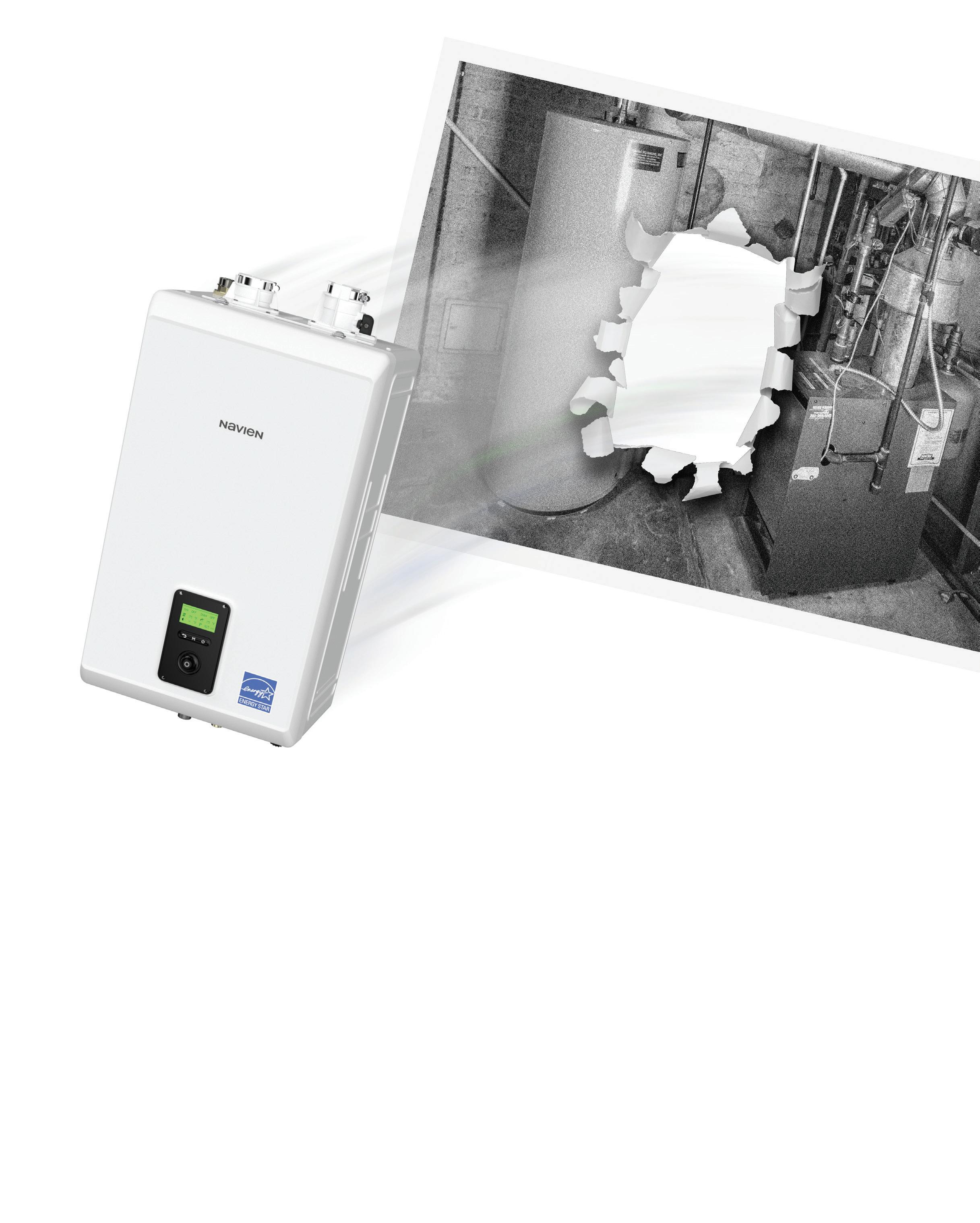
6 HPAC ENGINEERING MAY/JUNE 2024
EDITOR’S NOTES BY ROB
EDITOR-IN-CHIEF
MCMANAMY,
Navien NCB-H combi-boilers


Unmatched heating and DHW performance, all in one compact unit
• Heating up to 150,000 BTU/h and DHW up to 210,000 BTU/h
• Up to 80% smaller than floor standing boiler and tank water heater
• Optimized DHW priority with mixing valve and water adjustment valve to provide consistent DHW temperatures and industry leading flow rates
• Dual stainless steel heat exchangers for heating and separate SS heat exchanger for DHW
• Built-in controls for 3 zone pumps or 3 zone valves
• Heating TDR up to 11:1 and DHW TDR is 15:1
To learn more about the best-selling combi-boilers in North America, visit navieninc.com.
THE LEADER IN CONDENSING TECHNOLOGY Tear out that wasteful tank and boiler mess... ...and hang up the breakthrough in high capacity combis
What You Need to Know About the Refrigerant Transition Now Sweeping the Nation
Greenheck’s Eric Erdman gives a short primer on the ongoing refrigerants upheaval.
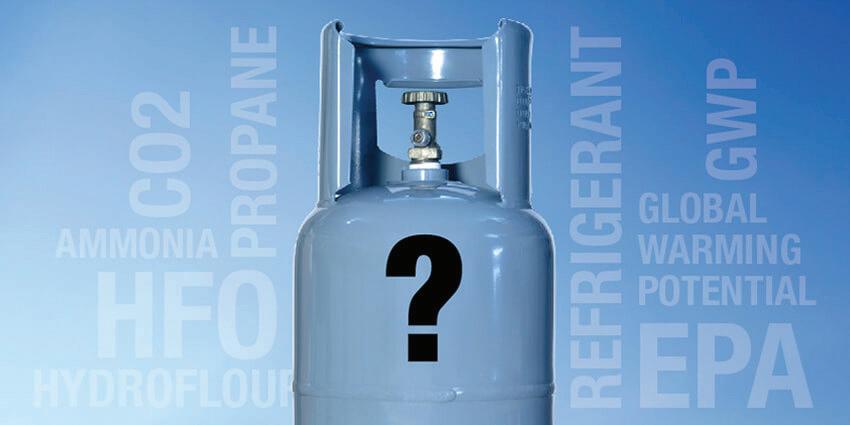
The author is the Principal Regulatory Compliance Engineer at Greenheck Group. This post originally appeared on the Greenheck blog.
The transition to low globalwarming refrigerants in the HVAC/R industry has been making headlines as the EPA deadline for most HVAC/R products to conform to the new refrigerant regulation is January 1, 2025. The following provides the basics on refrigerants and the impacts of the new regulation...
What are refrigerants?
Refrigerants are fluids that move heat by using a difference in pressure. Naturally, heat moves from hot to cold, but when refrigerant is pushed with enough energy, heat can be moved from cold to hot. That’s basically how refrigerators, air conditioners and heat pumps work.
Why the transition to low global-warming refrigerants?
Hydrofluorocarbon chemicals (HFCs) have become one of the major greenhouse gas components in the earth’s atmosphere. For this reason, countries around the world have committed to reducing the global warming impact of hydrofluorocarbon (HFC) chemicals as part of the United Nations Kigali Amendment. Since refrigerant leaks from HVAC/R equipment are a significant contributor to HFC emissions, the U.S. Environmental Protection Agency (EPA) has set regulations on the chemicals that can be used as refrigerants. As mentioned, the transition deadline to lower GWP refrigerants is now just six months away.
With the regulation of HFCs, what refrigerants can be used?
Carbon dioxide, ammonia, and propane can still be used as these natural refrigerants have relatively low Global
Warming Potentials (GWPs). The industry has also developed a new class of refrigerants comprised of hydro gen, fluorine, and carbon known as hydrofluoroolefins (HFOs) that have lower GWPs, as well. Not all HFCs have been banned as refrigerants as part of this regulation. HFC refriger ants and blends like R-32 and R-454B can still be used.
What are the safety considerations with these refrigerants?

Outside of carbon dioxide, the afore mentioned refrigerant types are either toxic, flammable, or both. To address these safety concerns, ASHRAE has a classification system to explain the safety considerations needed for each refrigerant. For example, R-32 and R-454B have a safety classification of A2L, which means they are refrigerants with lower toxicity and lower flammability hazards. Safety standards and codes use these classifications to set
8 HPAC ENGINEERING MAY/JUNE 2024
NEWS & NOTES BY ERIK ERDMAN, GREENHECK

















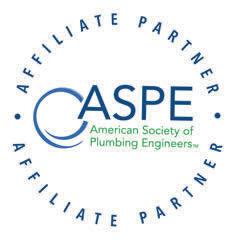

800.543.2550 LibertyPumps.com 7000 Apple Tree Ave. • Bergen, New York 14416 Copyright © Liberty Pumps, Inc. 2024 All rights reserved. Single stage and 2-stage models available. Heads to 185' Don’t get caught in a jam Pa te n t : S e e L i b e r t yPum p s c o m / pa te n t s
NEWS & NOTES
limits on how much refrigerant can be used and the measures that need to be in place for safe operation. A great deal of testing has been done to make sure that these limits and safety measures properly protect people and buildings.
How are refrigerant regulations changing?
The EPA has multiple regulations that need to work together to minimize the global warming impact of HFC refrigerants. These regulations also need new product safety standards
and modified local building codes to address hazards effectively. While the regulations and product safety standards are in place, many states still need to adopt or amend their codes to match the latest model building codes for this transition to work well for the building industry.
Many states are actively engaged in developing climate action plans which include addressing refrigerants. Twelve states from the US Climate Alliance have developed their own refrigerant regulations that adopted earlier EPA
guidance. While many regulations are closely aligned today, future phasedown requirements as part of the Kilgali Amendment may cause deviations between these regulatory agencies.
For the most up-to-date refrigerant transition information, refer to the following sources:
• Air Conditioning, Heating & Refrigeration Institute (AHRI) www.ahrinet. org/advocacy/safe-refrigerant-transition
• Environmental Protection Agency (EPA) https://www.epa.gov/climatehfcs-reduction
Survey: A/E Firms Foresee Stability, More A.I. Use
Study of 652 engineering and architecture firms finds cautious optimism on economy and a growing embrace of new technologies to help with worker shortages.

Deltek, a global provider of software and solutions for project-based businesses, in May unveiled its 45th annual Deltek Clarity Architecture & Engineering Industry Study. The results, based on
a survey of more than 650 A&E firms of all sizes in the U.S. and Canada, deliver industry-specific, key performance indicators, identify several challenges facing the industry, highlight bright spots and forecast future trends.
Produced for the American Council of Engineering Companies (ACEC), ACEC Canada, the American Institute of Architects (AIA) and SMPS, the new study serves as a benchmarking tool to help firms understand the state of the A&E industry and provides detailed
10 HPAC ENGINEERING MAY/JUNE 2024
Deltek
insight and analysis into technology trends, business development, financial statements, project management and human capital management.
The latest report shows that firms effectively navigated economic uncertainties and rising costs to achieve healthy, albeit flat, operating profit margins year-over-year. Reaching that steady state, relative to the volatility firms experienced in the past few years, enabled A&E leaders to focus on driving operational efficiencies, staff utilization and exploring technology to provide an additional edge.
Key findings from the report include:
• Win rates are stable, and firms are cautiously optimistic about growth, but also balancing that with decreasing proposal value. Firms project nearly 11% net revenue growth in 2023, up slightly from 10.2% last year. The number of proposals submitted and awarded also grew year-over-year giving firms an optimistic outlook for the year ahead, although they are still facing challenges. Firms cited finding time to nurture client relationships, increased competition and identifying new prospects as their main business development challenges.
• Use of AI-powered tools is gradually increasing across firms of all sizes, but there is an urgent need for targeted educational opportunities and support for employees to see benefits from this technology. 62% of firms expect artificial intelligence to improve their operational efficiency, and firms are already leveraging generative AI for marketing and proposal creation (24%), data summarization (17%), 3D modeling and rendering (15%) and data analysis (14%). However, there is still a need to refine internal processes and invest time into providing education, and working with experts to prioritize which types of emerging technology will be most impactful, to yield any potential cost savings and operational improvements.
• Finding a balance between cost containment and investment to enhance project performance is paying off. With an emphasis on training project managers and providing better tools to improve project delivery, firms report that 69% of A&E projects are on or under budget. However, staffing shortages are presenting challenges and competing priorities continue to present other challenges, especially for project delivery, with 40% of projects behind schedule.
• Firms are focusing on leveraging existing workforces to their fullest extent to pursue operational efficiencies and improve cost-effectiveness. Firms are adjusting to the “new normal” of reduced workforce sizes as post-pandemic voluntary turnover has stabilized and focusing on how to do more with less when it comes to managing workloads with existing teams. Firms with formal career development planning increased across all sizes and increasingly expanded their focus to all employees, although professional development remains one of firms’ top challenges.
“Firms continue to have an optimistic outlook. The A&E industry had a fairly flat but stable year in 2023 and is continuing to see revenue growth year over year, which was welcome after several years of economic volatility. It’s great to see firms continue to focus on upskilling existing talent and strategically investing in technology like AI to improve efficiency,” said Megan Miller, Director of Product Marketing at Deltek. “Firms should continue to focus on engaging employees, and invest resources into education and expertise to identify which emerging tech tools to take advantage of and how best to deploy them.”
The full Deltek Clarity report can be downloaded here: https://www.deltek. com/en/architecture-and-engineering/ clarity.

MAY/JUNE 2024 HPAC ENGINEERING 11
2402HPAC_FluidLine.indd 1 1/9/24 8:25 AM
• NeoTherm® XTR (399-1500 MBH; 10:1 turndown) our newest boiler and water heater –common vent for up to 8 units.
• MagnaTherm® (20:1 turndown; 95+ thermal efficiency) industry-leading fire-tube or water-tube boiler technology including Tru Trac® real-time O2 trim and Laars Linc® intuitive touchscreen control.
• FT Series Commercial Boiler (301 or 399 MBH; 10:1 turndown) our newest commercial boiler converts from wall to floor with optional stand.
Get all the technical details, specification and submittals information you need for Laars commercial condensing boilers for your next projects.
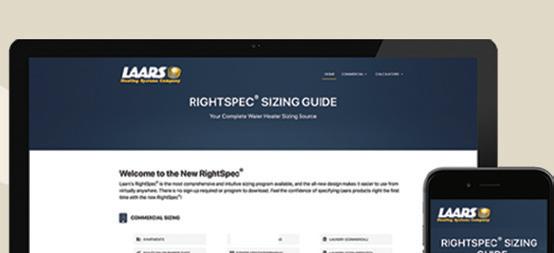





















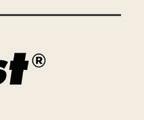
LAARS® COMMERCIAL CONDENSING BOILERS
POWERFUL SOLUTIONS. LAARS® RELIABILITY.
BOILERS – VOLUME WATER HEATERS – TANKS – CONDENSING – NON-CONDENSING – ELECTRIC Visit laars.com RightSpec Sizing Master Spec Revit and CAD Drawings B O I L E R S – V O L U M E WAT E R H E AT E R S – TA N K S – C O N D E N S I N G – N O N - C O N D E N S I N G – E L E C T R I C • Master • Revit and CAD ©2024, LAARS Heating Systems. All rights reserved. LRSHPEN0524 No matter what your next commercial project may require, count on Laars® for proven innovation, performance, and reliability:


Webinar: A.I., Drones, Digital Twins and You!
Now on demand, this new editorial event looks at the technologies transforming modern jobsites.
On May 9, HPAC Engineering hosted a special, 1-hour, editorial webinar presented by Dr. Burcin Kaplanoglu , chief of Oracle’s Industry Innovation Lab in Chicago. Focused on real world applications, he discussed the future uses of AI, robots, drones and digital twins in engineering and construction.
Drawing on the results from data experiments and equipment testing at Oracle’s lab, Dr. Kaplanoglu addressed specific use cases involving reality capture collected by LIDAR, scanners, digital cameras, etc. He also examined the potential bottom-line benefits of such technologies being used to alleviate antcipated labor shortages.
To learn more, find relevant links and contact info posted online at HPAC.com.
To watch the free webinar on demand, visit: www.hpac.com/members/webinar/21285224/new-webinar-ai-dronesdigital-twins-and-you.






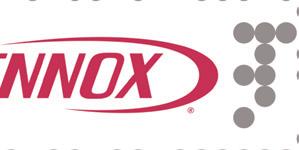






MAY/JUNE 2024 HPAC ENGINEERING 13 NEWS & NOTES
quantic69/iStcok/Getty Images Plus 2025 REFRIGERANT TRANSITION GUIDE 2406HPAC_LennoxCommercial.indd 1 5/21/24 3:34 PM
Advancing Fire Safety, with NFPA’s Jim Pauley
Ahead of the National Fire Protection Association’s annual meeting, its chief joined us to discuss the group’s new global strategy to be a more proactive industry advisor.

These are busy days for the National Fire Protection Association as it prepares for its annual conference this June in Orlando. So, HPAC On The Air was happy to welcome back NFPA President and CEO Jim Pauley as the May guest on our monthly podcast.
Pauley is also Chairman of the Board of the NFPA Research Foundation and, prior to joining NFPA in 2014, he had spent 30 years in the electrical and energy industry, working the last several of those years as SVP of External Affairs and Government Relations at Schneider Electric. An electrical engineer by training, he has also served the industry as chair of the American National Standards Institute (ANSI). Here, Pauley previews the 2024 conference and offers more details on NFPA’s big announcement in March that created a new, for-profit company, NFPA Global Solutions and NFPA Global Advisors
What follows is an edited transcript of our conversation...
HPAC: Jim, as NFPA prepares for its big conference in Orlando this June, please give us a bit of a preview of that event.
Pauley: We are excited once again to be approaching our conference time. This is our big game. It’s the one time when we can get so many of our stakeholders together in one place, and it’s all shaping up to be very heavily attended this year. It’s our first time back in Florida after quite a while. We were scheduled to be there during Covid and that was one of the years we did not have the show. So we put Florida back into the lineup and people are expressing that they’re quite excited to be going to Orlando.
Last year, we had folks from more than 86 countries attend and we’re expecting it to rival that this year in international attendance. Exhibit floor space is almost full, as
they tell me. So again, this should be extremely well attended by both exhibitors and members.
I’m really looking forward to it. We’re going to have about 130 education sessions that’ll be spread out across the tracks we’re bringing back this year. Also, we have a track of education sessions we’ll offer in Spanish this year, some on topics specific for Spanish-speaking audiences. So that’s another item that was quite popular before that we have brought back.
And then there’s our technical sessions, which will focus on our standards. It’s a big year for some of those standards: NFPA 13 on Sprinklers; NFPA 20 on Fire Pumps; NFPA 72 on Fire Alarms; and NFPA 80 on Fire Doors. All are standards that are going to be reviewed and discussed at the upcoming tech sessions. That’ll be that week. And it’s just a great time. I get really excited because I love being able to talk to our stakeholders, to our customers at this show. It’s just one of the really fun parts of my job.
HPAC: When you say it’s a big year for those codes and standards, does that mean that they’re coming up for renewal or revisions?
Pauley: There’s quite a few standards in what we call ‘in cycle.’ It’s a process where a number of our standards have finished with their technical committees, and then we open them up to everyone. We open all the standards up for a time with “a notice of an intent to make a motion.” That’s where people can say, “Hey, I’m going to come to the floor at the annual meeting, or at the annual tech session, and I’m going to raise this particular issue.”
14 HPAC ENGINEERING MAY/JUNE 2024 HPAC ON THE AIR HIGHLIGHTS FROM OUR MONTHLY PODCAST
When they do that, it gets on the agenda for the session that’s coming up in June. Standards that don’t receive any of those notices actually go right on through the process. So we have a series of standards that did not get any notices, which means people were pretty happy with what the technical committees had done.
Those standards will go on through the standards council process and then ultimately be issued earlier. They still have to wait on the annual meeting. But the standards I mentioned earlier, 13, 20, 72, 80, and a number of others, all have had notices of intent to make a motion submitted. And so that means somebody has said, “there is something I want to talk about at this annual tech session.” And they will show up to do just that. It’s really the great part about the process that we do.
In fact, I always say there are only 300 people in the world who can’t participate in this process, and those are the 300 people who work for NFPA. Everybody else, anybody, anywhere in the world, can participate through public input, through comments, through attendance at the tech session, through making motions, etc. It is just an extremely open and transparent process for everybody.
HPAC: That sounds like it should be energizing. On that note, NFPA just made another big announcement this spring when it launched a new company, NFPA Global Solutions, which includes NFPA Global Advisors. Please tell us about that effort and what the association hopes to accomplish with it.
Pauley: Well, NFPA has always been a 501(c)(3) nonprofit. So it has existed as a public charity for all of these years. And as with almost any organization or business, as your stakeholder base begins to expand, they begin to ask you for other things that you can potentially do. But a number of those


things you can’t necessarily do under the banner of a public charity.
So, NFPA Global Solutions is a fully owned, for-profit entity underneath the NFPA umbrella. But it’s completely separate from NFPA. It has its own staff. It has its own board of directors. And they’re really going to focus on three areas. One part of those are compliance solutions. A lot of people looking for NFPA now will be able to come to NFPA Global Solutions and say, “Hey, what about this particular product? Can it be used in these applications? Does it meet the requirements of the standard and so
forth?” We call that the testing, inspection and certification market. The second part of that is really focused on digital tools for our customer base. So, when you think of the engineers, you think of the installer community, and all those different areas we serve. Are there digital tools that we could be offering as NFPA Global Solutions that could help people to do their jobs better? And so you can think of that in terms of software on the NFPA side. We already did that a bit with NFPA Link, which is the access to our codes and standards platform, along with several other things that it does for our users.
MAY/JUNE 2024 HPAC ENGINEERING 15
In February, Pauley met with Mexican fire chiefs and industry leaders in Mexico, just part of his broad international duties.









HPAC ON THE AIR
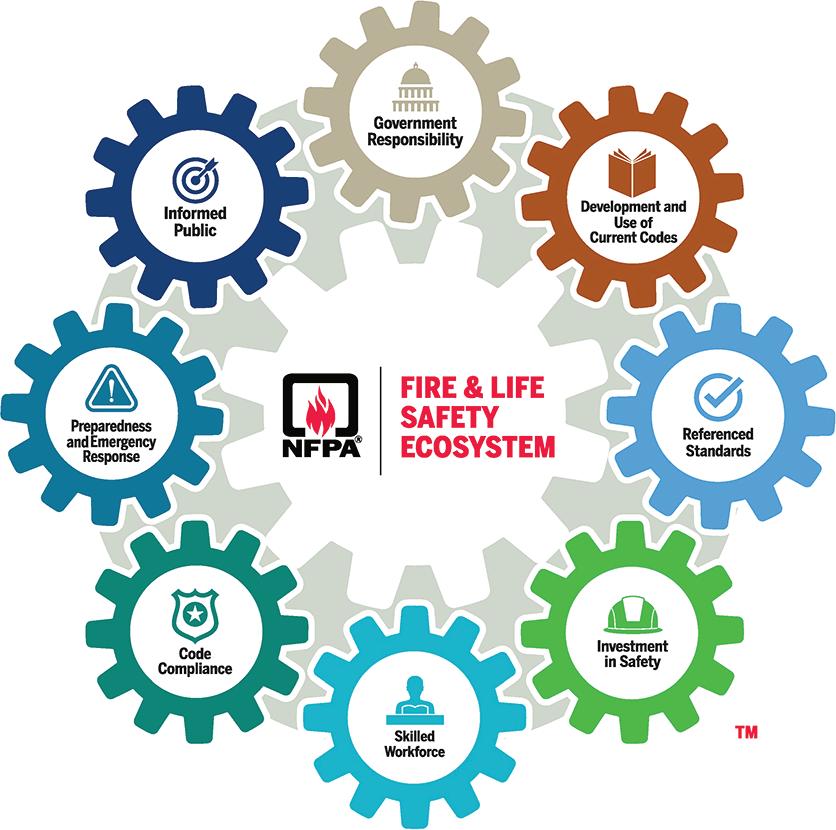
And then the third area you mentioned is a business within NFPA Global Solutions called NFPA Global Advisors. And this one’s interesting, I think, in two aspects.
One is, regardless of what we have said, people try to interpret their own way what we do. It is not a consulting engineering company. It is not a fire protection engineering company. For decades, NFPA has been asked to work with governments all around the world to help. It is often in a standards context initially and often saying, “We need you to help us with safety in our country.” And ‘NFPA proper’ was always just about the standards context of that.
So back in 2018, we introduced the NFPA Fire & Life Safety Ecosystem, and graphically, we show it everywhere. It’s eight cogs of what we say are important in order for safety to work. And they include things like government’s responsibility, codes and standards, reference codes, investing in safety enforcement, appropriate training for people, public education, a good first responder network. Those things make up the ecosystem.
And so what NFPA Global Advisors is about is taking that ecosystem and working with governments to help them create their system of safety. It’s not designing buildings. It’s the things that governments really need to put in place to be able to create that entire system.
I’ve sat all over the globe and I was in one particular country and very directly, the minister of government there said to me, “We get the codes and standards piece. What we need your help with is how do we actually put all of the pieces in place as a government to make all of this work? How do you put an enforcement system in place? How do you make sure people have appropriate training to be able to do the work?”
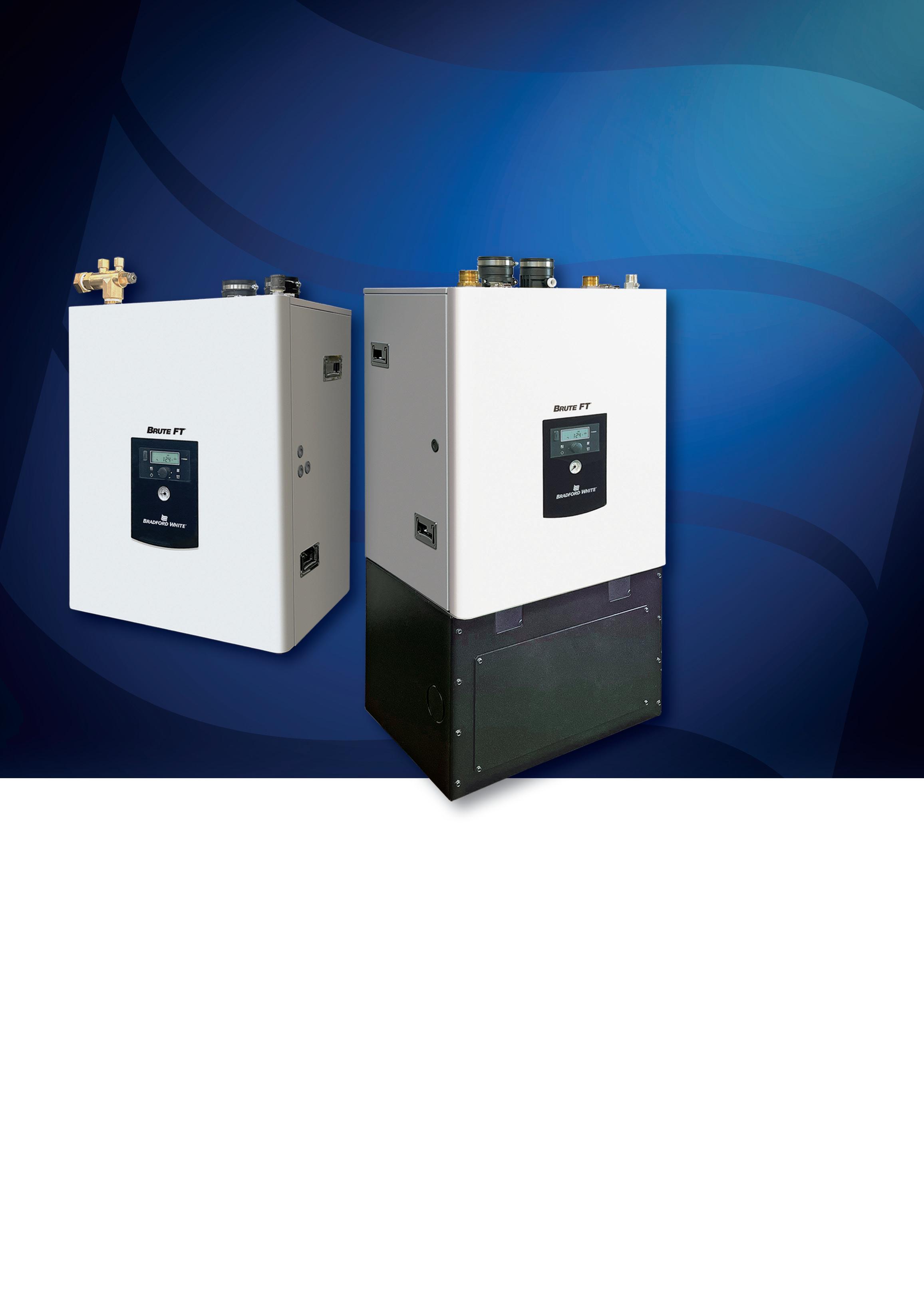
16 HPAC ENGINEERING MAY/JUNE 2024
I 2404HPAC_EvergreenTelemetry.indd 1 2/19/24 10:01 AM 2406HPAC_Fieldpiece.indd 1 4/2/24 3:12 PM
THE DEFINITION OF VERSATILITY

Up to 10:1 Turndown 95%+
Thermal Efficiency
Easily converts from wall to floor unit with heavyduty stand
New Brute FT® Wall-Hung & Floor Standing Boilers
Engineered to be as flexible as it is efficient, our all-new Brute FT® Series fits in a high variety of commercial applications. Choose from 301 & 399 MBH sizes with these impressive features:
• Durable 316L stainless steel fire tube heat exchanger
• Cascade up to four boilers — any combination of sizes
• PVC, CPVC, SS, or PP venting materials –3" up to 65' and 4" up to 150'




Explore our latest commercial boilers.
• Top or bottom water and gas connections (same size and configuration on both models)
• Integrated mixing valve control
• Low NOx system exceeding stringent regulations
©2024, Bradford White Corporation. All rights reserved. BWHPEN0524
HPAC ON THE AIR
So that’s what NFPA Global Advisors is about. And as we do that, it’s going to expand the need for more engineering services that consulting engineering firms offer. It’s going to expand the need for installation services that installation firms offer. So it really is going to the old saying, “A rising tide raises all boats.” That’s what the ecosystem is about. How do you elevate safety so that all of those things in the safety ecosystem get utilized better and more effectively.
HPAC: Does the use of the word ‘global’ for both solutions and advisors mean that NFPA anticipates more international use of these products than domestic use?
Pauley: So, that’s a really interesting question. I’ve been at NFPA now 10 years, and people would always ask me, ‘What was your biggest surprise when you came to NFPA?”
For 30 years, I’ve been a member, a customer, a technical committee member. I was on the standards council for NFPA for 14 years and I even chaired that. So I knew NFPA well, but what surprised me, and I knew NFPA did things internationally. But what surprised me is how big the reputation of NFPA is internationally. And so, yes, directly I do expect through NFPA Global Advisors that

there will even be more international focus. But you also have to remember that the fire problem doesn’t know any geographical boundaries.
So our mission, our vision is about being the leading global advocate for the elimination of death, injuries, property damage and economic loss. So I think yes, it’s going to drive more global action. People are looking for these solutions globally.
HPAC: ‘Global’ also makes me think of the pandemic, of course, which affected every industry. With the rise of remote work and the increase in unused office spaces, mechanical systems were impacted dramatically for extended periods. How has all of that impacted fire protection?
Pauley: That’s been interesting. It seems to have corrected itself back to some sense of normalcy as it was in prepandemic. In other words, people are getting inspections done, people are doing the work that needs to happen. But I think your whole point about office buildings and what happens to those still remains a question. One of the things that we’re seeing quite a bit is converting office buildings into housing in those empty spaces. Now, as you can imagine, that opens up all sorts of sets of issues that you’ve got to deal with when you have that radical of an occupancy change. But people are working their way through that. The other big thing that I think was really pandemicrelated, we’ve seen the interest in remote inspections really increasing. And so we did a standard NFPA 915 on Remote Inspections that talks about how you should be doing those, how you do record keeping, etc. And we’re seeing that really is on the rise because, like so many things during the pandemic, people saw that it could be done, and in a lot of cases, it was more effective and more efficient. And I think that’s going to continue. The more Internet of Things (IoT) connects things like fire pumps and sprinkler systems and all that monitoring into building systems, the more I think we’ll see all of this activity happening.
HPAC: That feeds into my next question on technology. So many of the developments in that area seem to go handin-hand with manpower shortages. And smoke detectors and automatic sprinklers, of course, were some of the first widely accepted building automation tools in our industry. How do you see things like AI and other smart building tools like drones changing the future of fire protection?
Pauley: There’s a lot of interesting pieces in that question. I think we’re seeing a shift in where the interest of talent lies in a lot of these areas. And let me just draw parallel on the NFPA side, and then maybe I’ll come back to the industry specific piece. I came from a generation where the NFPA
18 HPAC ENGINEERING MAY/JUNE 2024 2005HPAC_Shortridge_AirData.indd 1 4/9/20 9:49 AM
HIGHLIGHTS FROM OUR MONTHLY PODCAST
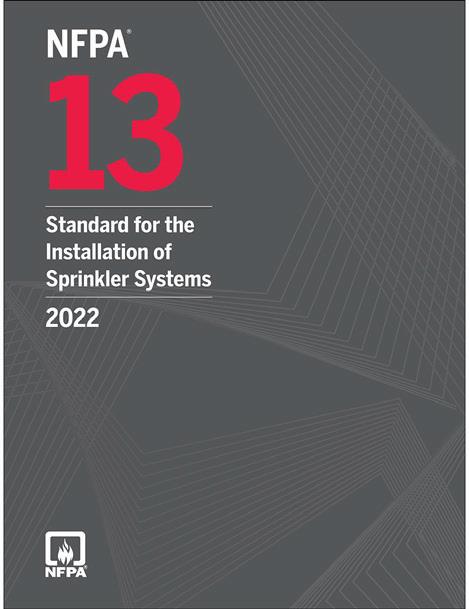


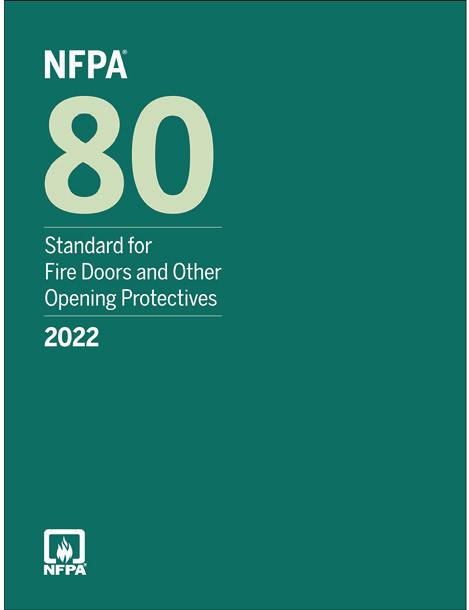
World Codes and standards were books, right? That’s what we were doing. In recent years, we created NFPA Link for a number of reasons, but one of which was the generation that was coming is much more interactive, much more wanting to have things online, wanting to have information at their fingertips. As an old code guy from the past, we learned a lot of things about a particular code or standard. And boy, you could cite chapter and verse back then.
What we’re seeing with this next generation is “No, no, I have a specific question.” So they just want to know the most effective way to get that answer. And that’s the reason why tools for us like NFPA Link have become so important. It’s because it is taking that whole realm and serving that information up in a different way than what we were able to do just in book form previously. So that’s a bit of the shift that we’re seeing on the talent.
Then when you get to the industry, what are things like AI and some of these other pieces going to do? I am cautious about the AI portion of this and I’ll explain. I think AI has great opportunity in using these large amounts of data to help people be able to understand things better. But as an example, I was talking with somebody the other day who noted, “If fire departments use AI to help them decide how to dispatch resources and AI is wrong, then the result can be pretty serious.” So I am always careful about that. I think human input is still a really important part of this equation. AI’s a tool. It’s not a replacement for a lot of the things that we’re talking about.
Of course, there are people who would disagree with me, but I am not sure I want to be in a building that’s been designed completely by AI today. I think engineers and human thought still play an important role. And the reason for that is there are a lot of variables in every one of these equations. You can build two buildings that you think are identical, but you will still run into different sets of decisions in each one. That’s just because of how construction progresses, what happens on different sites, who are the workers on one project versus the other, etc.
Drones are also interesting and they really add to the data equation. So we created NFPA 1200, our standard for use of drones by first responders to try to help them get their arms around good drone programs. And AI can really help to interpret a lot of the data they collect, too.
For the rest of this podcast, including more on next generation recruitment and promoting building fire safety, please listen in at hpac.com/members/podcasts.

MAY/JUNE 2024 HPAC ENGINEERING 19 2005HPAC_Shortridge_HydroData.indd 1 4/9/20 9:50 AM
BIG YEAR FOR STANDARDS: These four and more will all be reviewed and discussed at the annual meeting in Orlando.
Battling Climate Battling Climate
INSIDE THE O.R.
Controlling the environment in hospital operating rooms doesn’t have to be an uncomfortable fight that is always lost.
 By DAVID SCHURK, DES, CEM, LEED AP, CDSM, SFP
By DAVID SCHURK, DES, CEM, LEED AP, CDSM, SFP
Many rooms in hospitals require special design considerations due to intensified infection concerns, high air change rates, special equipment, unique procedures, high internal loads, and the presence of immunocompromised patients. But in no other healthcare space does the design of the HVAC system take on more importance than in an operating room (O.R.), where its
purpose is to minimize infection, contribute to an environment of patient care, and maintain staff comfort.
Hospital operating rooms are notoriously plagued with environmental control problems revolving around the inability to maintain temperature and relative humidity conditions that comply with various healthcare codes and standards while satisfying the comfort demands of surgeons and staff. This article will provide an understanding of the underlying causes for some of the most predominant of these issues, while giving guidance on how to best
cope with them. Unfortunately, many hospital facility professionals have resigned themselves to the idea that these problems cannot be resolved, which is often far from the truth.
COMPLAINT: “Why do surgeons want the operating room cooled to such low temperatures, many times demanding 60°F (15.6°C) or colder?”
CAUSE: Many surgeons, particularly those performing orthopedic, or other highly invasive procedures, are heavily gowned in multiple layers
David N. Schurk DES, CEM, LEED-AP, CDSM, CWEP, SFP, CIAQM, is the “Dehumidification Jedi” at Innovative Air Technologies in Covington, GA. He is an ASHRAE Distinguished Lecturer and has over 40-years of experience in the design and analysis of heating, ventilating, and air-conditioning systems for a variety of market sectors, with a special focus on aerospace and healthcare facilities. He can be reached at david@dehumidifiers.com.
20 HPAC ENGINEERING MAY/JUNE 2024 FEATURE
David Schurk
of outer garment, while wearing face and head protection encapsulating their entire body. This protects both staff and the patient from the transfer of bodily fluids and potential bloodborne or airborne contamination. These surgeons are using an array of surgical instruments, including hammers, chisels, and saws, while working diligently under intense lighting in what is a highly physical and mentally taxing environment.
Surgeons quicky begin to perspire (sweat) under these circumstances, becoming physically hot and wet, which leads to immediate distraction and discomfort. Their first inkling is a feeling that they’re too warm. So they demand relief through the lowering of the room’s temperature setpoint in hopes of establishing a more comfortable environment.
When humans feel too warm, they seek cooler surroundings. Any relief we may experience indoors comes, in large part, from achieving the proper combination of temperature and relative humidity. Relative humidity plays a major role in our body’s ability to cool (and remain cool) as it impacts the evaporation of perspiration from our skin. Lower relative humidity assists in the evaporation of moisture and is the underlying principle behind evaporative cooling.
We are constantly perspiring, and the evaporation of this moisture absorbs approximately 1,060 BTU/hr of internal body heat for every one pound of perspiration removed. To effectively achieve this, increasing our skin’s exposed surface area and/ or lowering relative humidity may be necessary.
Surgeons who are heavily gowned have very little skin exposed to the ambient air, so unless the relative humidity (and associated air moisture content) in the environment they occupy is low enough to help assist in evaporating (wicking) this moisture through multiple layers of clothing and into the surrounding air, they may receive little if any relief in this

regard. Surgeons in these situations have compared what they are experiencing to that of being wrapped in a sheet of plastic. They may be sweating profusely, experiencing extreme discomfort, and losing focus, all of which may seriously impact their performance and the patient’s outcome.
CURE: The O.R. must be controlled to that combination of temperature and relative humidity which can achieve thermal comfort while also accounting for the evaporative cooling effect mentioned above. In orthopedic surgical suites the combination of conditions that best satisfy surgical staff in these situations has been found to be 60°F (15.5°C) at 40% relative humidity.
COMPLAINT: “When I lower the operating room space temperature (at the request of the surgeon) the relative humidity goes up!”
CAUSE: Most hospital central utility plants produce and provide a chilled water temperature (CWT) of 42°F (5.6°C) which is pumped to an HVAC system cooling coil tasked with cooling and dehumidifying supply air for
distribution throughout the facility. While this CWT may be cold enough to produce satisfactory (sensible) temperatures, it is usually not cold enough to properly dehumidify the air in order to achieve the lower relative humidity conditions required in the O.R. space.
You can see what happens in Figure 1.1 (p. 22) when the space thermostat setpoint is lowered from 70°F (21.1°C) down to 60°F (15.6°C), upon the surgeon’s request for a more comfortable environment.
While 42°F (5.6°C) CWT can easily provide air cold enough to maintain a 60°F (15.5°C) space temperature, the cooling coil’s surface can only be chilled to approximately 45°F (7.2°C). This drastically limits the ability of the coil to condense enough moisture from the air to achieve a corresponding low dew-point temperature, and results in an increase in O.R. relative humidity whenever the space temperature is lowered. With higher relative humidity, less evaporation of perspiration is occurring, and staff continue to perspire underneath their gowning. Sweat is also being absorbed into their clothing, making it wet, resulting in distracted and disgruntled surgeons
MAY/JUNE 2024 HPAC ENGINEERING 21
Figure 1.0: Orthopedic surgeons are often heavily gowned in the O.R.
David Schurk
and staff. At this point, O.R. relative humidity may be well outside of compliance with healthcare codes and standards which mandate a maximum of 60% RH be maintained.
CURE:
1. Raising O.R. space temperature (with reheat) may lower the relative humidity, but if the resulting temperature becomes too warm, surgeon comfort may still be sacrificed;
2. Adjust the thermostat’s cooling setpoint downward to that temperature which coincides with a space relative humidity that remains within compliance to applicable healthcare codes and standards for O.R. environments. Understand that a colder space temperature, along with a higher relative humidity, may be less comfortable for staff than a higher temperature coinciding with a lower relative humidity. The evaporation of perspiration from the surgeon’s skin and gowning is paramount to their satisfaction;
3. Lowering the CWT cold enough to properly dehumidify the air may be deemed necessary for O.R. staff comfort and productivity. This solution is very limited in its practicality if chillers were not originally sized for this change, as it may negatively impact the performance, efficiency, and capacity of the entire HVAC chilled water system;
4. Facilities dealing with consistently high space relative humidity, or excursions in humidity that create negative consequences in the O.R., should be analyzed for HVAC equipment and controls upgrades specifically designed to handle the stringent dehumidification demands of critical care environments.
COMPLAINT: “At times, it ‘rains’ in the operating room, with water dripping from surfaces.”
CAUSE: “Raining” in the O.R. (as it is often termed) is the occurrence of liquid condensation on cold surfaces. This condensate can accumulate and drip into the space, onto sterile medical devices and instruments, onto surgical staff, or perhaps into the surgical opening of a patient.
Moisture in the air can be condensed on any surface which has been chilled below its dew-point temperature, much in the same way high humidity in the air is condensed onto a cold cooling coil, or onto a cold can of beer on a hot, humid summer day. This phenomenon occurs in the O.R. when surfaces have been chilled below the humidity equilibrium (dew-point) of the surrounding air. This chilling effect is usually a direct result of a temperature setpoint which has been lowered at the request of surgeons and staff seeking improved comfort.
When this condensation occurs during surgery, it places the procedure at considerable risk. Water harbors microbial contamination, some of which may be harmful or deadly if a patient is exposed and cross-contamination occurs. It is a concern regarding the occurrence of surgical site infections (SSIs), hospital acquired infections (HAIs), and jeopardizes
Operating Room

Air at a higher grains per pound (gr/lb) contains more water vapor. There are 7,000 grains in one pound of water.
Figure 1.2: The air’s moisture content.
any healthcare code compliance as the O.R. is usually well above 60% RH at this point.
CURE:
1. In these situations, raising O.R. temperature (with reheat) may help warm chilled surfaces above the air’s dewpoint temperature, while also lowering the space relative humidity to begin mitigating condensation, but if the situation has already occurred, it’s an effort employed too late. In addition, if the resulting space temperature becomes too warm, surgeon comfort may be sacrificed;
2. Monitor the combination of O.R. temperature and relative humidity to determine its dew-point, and ensure it always remains well below the temperature of any chilled surfaces in this space. Overhead HVAC supply air registers are usually going to be the coldest object, are constructed from non-porous material which easily drips water, and therefore may be the first point of concern with moisture condensation. The grille’s surface temperature will approximate that of the HVAC system supply air. If the leaving air temperature from the grille is 55°F (12.7°C), then the space dew-point temperature should be maintained at least 4°F (2.2°C) lower, so no higher than 51°F (10.5°C). Note that under these conditions and with lower space temperatures, the O.R. may be above 70% RH. So much lower supply air dew-point temperatures are usually required. This is not achievable with chilled water temperatures of 42°F (5.6°C);
3. Measure and control O.R. conditions to maintain relative humidity below the maximum mandated in applicable healthcare codes and standards for the facility. This usually calls for an upper limit of 60% RH;
22 HPAC ENGINEERING MAY/JUNE 2024 FEATURE
Location Temperature Relative Humidity Moisture
70°F 55% 60.2
Outdoors 89°F 40%
Figure 1.1: What happens when you reduce O.R. space?
Indoors
gr/lb
82.1 gr/lb
70°F 65°F 60°F Too Warm Cool & Clammy Noncompliant Cold & Clammy Noncompliant 63%RH 75%RH 53%RH
42°F CWT
4. As relative humidity in the space rises above code mandated maximums, your choice(s) in reducing it include lowering the chilled water temperature to HVAC system cooling coils, applying terminal reheat to warm the air, or both. This should be an automated function through the controls system which safeguards the space. Note that if the resulting space temperature becomes too warm, surgeon comfort may be sacrificed;
5. Facilities dealing with consistently high space relative humidity, or excursions in humidity that create negative consequences in the O.R., should be analyzed for HVAC equipment and controls upgrades specifically designed to handle the stringent dehumidification demands of critical care environments.
COMPLAINT: “On days when outdoor relative humidity is low, why does the humidity in the hospital facility increase when more ventilation air is introduced?”
CAUSE: Relative humidity alone has no significance in determining the actual amount of water vapor (moisture) contained in a particular sample of air. It is the amount of moisture in the air we are concerned with when designing air-conditioning and dehumidification systems that can properly remove it. As its name implies, relative humidity is a “relative” term, and must be considered in combination with temperature to assess the amount of water vapor an air sample contains by weight, or in grains per pound.
Don’t be fooled into thinking that just because an air sample has a low relative humidity, it is always “drier” than that which is at a higher relative humidity. This is often a false premise, leading to facility operators mistakenly bringing in “moister” outdoor ventilation air in a misguided attempt to save energy on the HVAC system’s operation.
Figure 1.2 shows two ambient air conditions: one is indoors at a higher relative humidity, while the other is outdoors at a lower relative humidity. As can be seen, the outdoor air contains much more moisture in this case. Limiting the amount of this air brought into the HVAC system, while always maintaining healthcare code required ventilation rates, would be less taxing on the HVAC equipment.
CURE:
1. Always maintain healthcare code required outdoor ventilation rates. These should be measured and monitored to ensure compliance;
2. Don’t arbitrarily bring in excess outdoor ventilation air (above code minimum) without first understanding the psychrometric properties of both the indoor and outdoor air conditions. If you increase ventilation air, have a sound reason for doing so. If you bring in additional outdoor air, understand that it may negatively impact space pressurization balances unless additional exhaust is provided;
3. Facilities dealing with consistently high space relative humidity, or excursions in humidity that create negative
“I Want it Colder!”

“I Want it Drier”
Many times, lower RH values may be necessary to create an environment which can absorb perspiration (evaporate sweat) and remove heat through multiple layers of clothing and into the surrounding dry air.
60°f @ 40%rh
Approximately 1,060 Btu/lb of “moisture” evaporated “Point of Diminishing Complaint”*

consequences in the O.R., should be analyzed for HVAC equipment and control upgrades specifically designed to handle the stringent dehumidification demands of critical care environments.
SUMMARY
Many times, surgeons seeking relief from heat stress will demand “colder” O.R. temperatures, when what they really need is “drier” space air to assist in evaporating perspiration from their skin and garments.
Battling the environment in hospital O.R.s doesn’t have to be a fight that is always lost. There are resolutions to help hospital engineers and facility managers deal with the consistent problem of high relative humidity in these spaces. While some are a temporary, “band-aid” style approach, permanent solutions are available including solid desiccant dehumidification. It is a proven HVAC technology that can ensure compliance with healthcare codes and standards while catering to the demands of surgeons and staff seeking a more comfortable and productive environment.
REFERENCES
1. ASHRAE HVAC Design Manual for Hospitals and Clinics, Second Edition, 2013.
2. ANSI/ASHRAE/ASHE Standard170-2021 Ventilation of Health Care Facilities.
3. FGI Guidelines for Design and Construction of Hospitals and Outpatient Facilities, 2014 Edition.
4. ASHRAE Journal, Conditioning for the Environment of Critical Care; Hospital Operating Rooms, October 2019.
5. ASHRAE Journal, Avoiding Wet & Moldy AHUs in Critical Care Facilities, November 2023.
6. ASHRAE, Understanding Psychrometrics, Third Edition, 2013.
7. Journal of Industrial Textiles, Development of Breathable and Liquid/Wet Bacterial Penetration Barrier Composite Laminated Fabrics for Surgical Gown Applications, 2023.
MAY/JUNE 2024 HPAC ENGINEERING 23
Figure 1.3: Finding that point of diminishing complaint.
BOILER 2024 Delivers, ABMA Now Looks Ahead
Boiler manufacturers on Rocky Mountain ‘high’ after bigger, better, ‘total supply chain’ conference and expo in Colorado.
 By ROB MCMANAMY, Editor-in-Chief
By ROB MCMANAMY, Editor-in-Chief
Pleased beyond words, the American Boiler Manufacturers Association (ABMA) can hardly contain itself this June in the wake of its BOILER 2024 event in Denver at the start of May. Just the second in ABMA’s ongoing series of bi-annual trade shows aimed at the entire boiler supply chain, this year’s event drew 1,356 attendees and 111 industry exhibitors to Colorado.
Those numbers were up considerably from the inaugural BOILER 2022, which launched in Dallas with 1,058 attendees and 80 exhibitors.
“As both an ABMA member and exhibitor, I was extremely pleased with BOILER 2024,” said event chair Eric Graham, national sales manager for Webster Combustion Technology, LLC, an ABMA member based in Winfield KS. “The attendance was excellent, and our company found tremendous value in participating. It’s clear that the show’s worth will continue to increase over time.”

24 HPAC ENGINEERING MAY/JUNE 2024 BOILER SYSTEMS ENGINEERING
ABMA
As chair of the BOILER 2024 advisory committee, Graham went on to thank his fellow committee members and ABMA staff for their hard work. “Their commitment to making this the premier trade show in our industry is both evident and promising,” he added. “Looking ahead to BOILER 2026, I’m confident it will surpass expectations, offering even greater benefits to ABMA and all of our member companies. Let’s get ready for Nashville!”
Shaunica Jayson , ABMA’s vice president of marketing and communications, notes that the Nashville event will have a slightly altered name. “We’re calling it BOILER Expo 2026,” she notes.
For her part, Jayson also moderated the inaugural panel at BOILER 2024 for ABMA’s newly launched Women in the Boiler Industry (WIBI) Professional Community. Also on stage (opposite) were ABMA’s board

vice-chair, Nancy Simoneau, president of Groupe Simoneau; Kimberly Adkins, chief boiler inspector for the Commonwealth of Virginia (the nation’s only female chief boiler inspector); Tricia Staible , ABMA board member and president of Robinson Fans; and Teresa Melfi, a Lincoln Electric Technical Fellow who holds over 50 welding patents.
“All I can say is that we’re at the tipping point right now in our industry for the inclusivity of women in the workplace,” said Simoneau after the event. “I am profoundly moved by
WIBI and its meaning for many of us, especially young females who want to come into our industry and make a good living out of it. Being alongside of these amazing women in Denver was a total privilege.”
WIBI’s goal is to promote, inspire, support, and connect women in the boiler industry. Look for much more from WIBI in the days ahead, adds Jayson. In the meantime, ABMA can now begin setting its sights on next January’s annual meeting in Savannah GA. For more on that, visit www. abma.com/annual-meeting .
ABMA Promotes Jayson to New VP Role
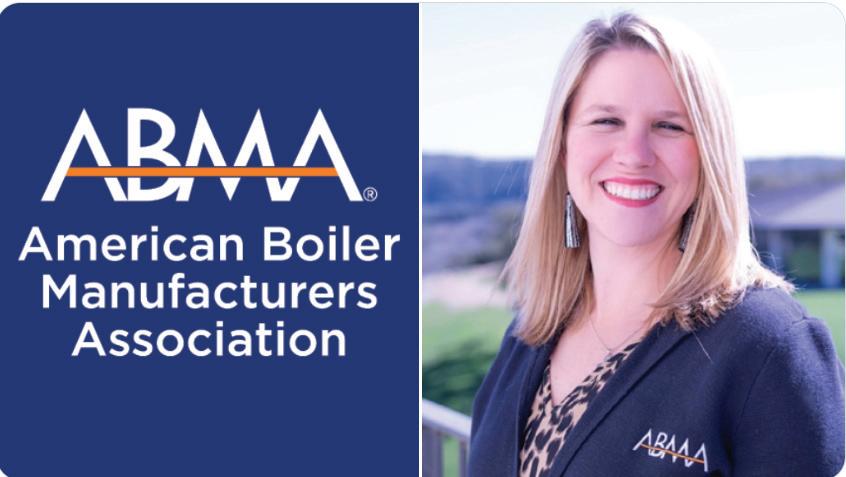
The American Boiler Manufacturers Association (ABMA) has promoted marketing director
Shaunica Jayson to the newly created role of Vice President,
Membership and Marketing. This promotion was effective May 1, 2024.
Since joining ABMA in 2017, Jayson has grown into an integral ABMA team member, partnering with President & CEO Scott Lynch on all levels
to advance the association. She brings a strong dedication to ABMA and was a key contributor this spring to the success of BOILER 2024 in Denver, which included moderating the inaugural panel for the new group Women in the Boiler Industry (WIBI).
“Shaunica has an unending passion for her work and is always seeking to create enhanced value,” said Lynch.
“She has revolutionized ABMA’s marketing efforts and grown our digital presence to reach well beyond our membership. Shaunica has also played a key role in member recruitment resulting in a record number of members this past fiscal year.”
In her new role, Jayson will oversee all facets of membership beyond recruitment, even as she focuses on enhancing the value of ABMA’s member programs.
MAY/JUNE 2024 HPAC ENGINEERING 25














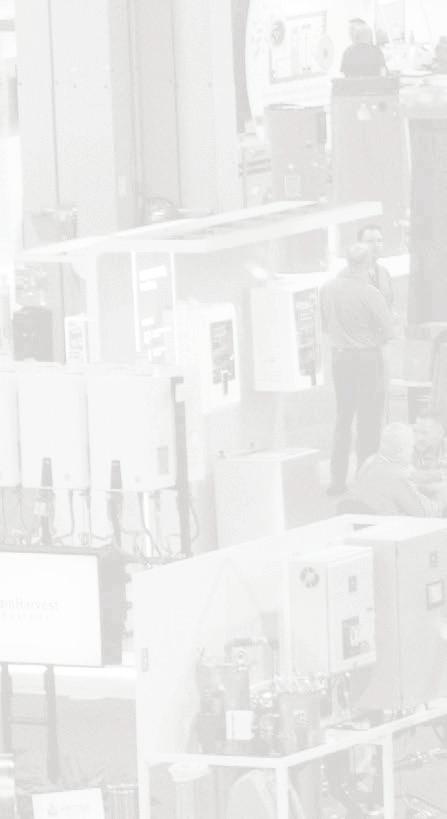



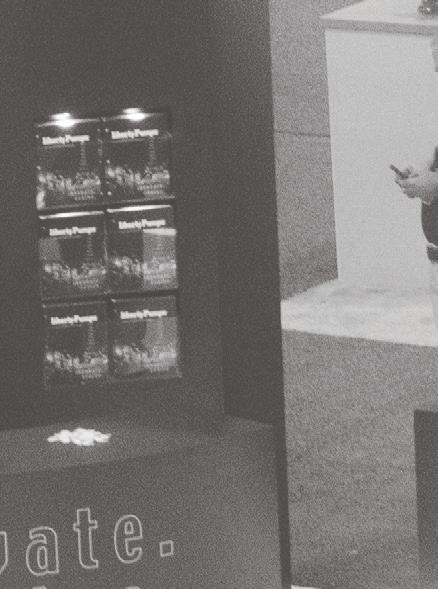

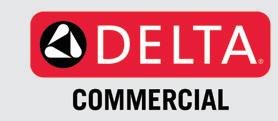




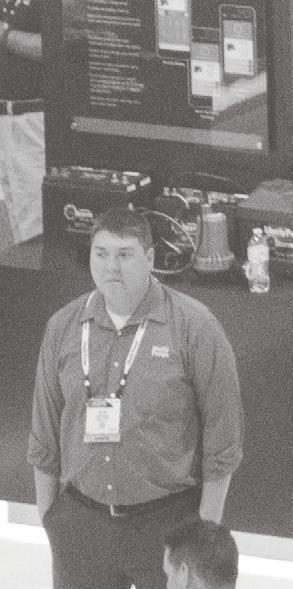



You’re Invited to the Largest Event for Plumbing System Professionals What You’ll Find:
New plumbing technologies from more than 250 global exhibitors Practical solutions to your plumbing design challenges directly from product engineers A show floor filled with industry experts providing hands-on technical solutions New skills from professional development and technical education sessions + + + 250+ exhibitors 4,000+ professionals 25+ sessions Columbus, OH October 18–23 Convention & ASPE EXPO’24 EXPO’24 Thank you to our sponsors! Register at expo.aspe.org use promo code: HPAC
+



Greenheck AFL-601 FEMA Louver
Greenheck’s Model AFL-601 is an all-in-one wind-driven rain FEMA dual-module with horizontal front blades and vertical rear blades designed to protect air intake and exhaust ventilation openings on FEMA 361/320 storm shelters or safe rooms. It is tested in accordance with the stringent ICC 500 (2020 & 2023) test standard and is UL Listed. AFL-601 is AMCA 540 Listed for Wind-Borne Debris Impact and AMCA 550 Listed for High-Velocity Wind-Driven Rain. Greenheck
Xylem e-80X Smart Pump
Part of Bell & Gossett’s series of hydrovar® X-enabled smart pump solutions, the e-80X Smart Pump offers enhancements to the highly efficient Series e-80 vertical in-line pump line by pairing it with Xylem’s hydrovar X Smart Motor. This combination delivers significant improvements, including a more compact offering that is approximately 25% smaller than the legacy e-80 ITSC package and an increased speed of 4,000 RPM versus 3,600 RPM—increasing pump hydraulic performance over a much wider range of operating conditions. All products in Bell & Gossett’s hydrovar X series offer built-in intelligence and safety, ultra-premium efficiency from the IE5 permanent magnet assisted synchronous reluctance motor and a compact, sustainability-forward design featuring market-leading motor technology that doesn’t use rare earth metals. Xylem


DENIOS BatterySafe™ Cases
DENIOS -US introduces a complete line of BatterySafe™ cases designed specifically to transport lithium-ion batteries in accordance with international regulations. Batteries are surrounded by cushions filled with Pyrobubbles® - an extinguishing agent which provides protection against thermal runaway, and exothermic reactions. Reusable and easy to use, they have an operating temperature range from --4°F to 176°F, and a storage temperature range from 60°F - 86°F. Compliant with all related international regulations, including special requirements for packaging and transport. BatterySafe™ cases offer peace of mind, knowing that the lithium-ion batteries are stored safely and compliantly, whether shipping batteries for development, distribution, or disposal. Available in various sizes, they are ideal for li-ion batteries for e-bikes, power tools, laptop and mobile batteries, automobile batteries, e-vehicle batteries, and more. DENIOS
Ruskin BTD830 Isolation Damper
Ruskin® announces the BTD830 bubble tight isolation damper, a model ideal for applications where extremely low leakage is required. The rectangular design offers more free area, lower pressure drops, better airflow compared to round or oval dampers, and is a lower-cost alternative to other bubble tight dampers. Typical applications include biotech labs, food processing operations, industrial process systems, laboratories and nuclear power plants, along with medical, military and pharmaceutical facilities.
Ruskin

MAY/JUNE 2024 HPAC ENGINEERING 27
NEW PRODUCTS
NEW PRODUCTS
Software House iSTAR G2 Controllers
Johnson Controls’ Software House iSTAR G2 family of controllers leverages the latest innovations to enhance security, reduce operational effort and improve user experience. Further strengthening its enterprise product portfolio, Johnson Controls has added a new Rack Mount Network Video Recorder (NVR) to the American Dynamics VideoEdge surveillance portfolio, providing the highest possible reliability and increased performance with 50% more throughput. With a 5-year warranty and next-business-day on-site service, this new Rack Mount NVR sets the standard for the expansion of this portfolio to provide additional protection and peace of mind.
Johnson Controls
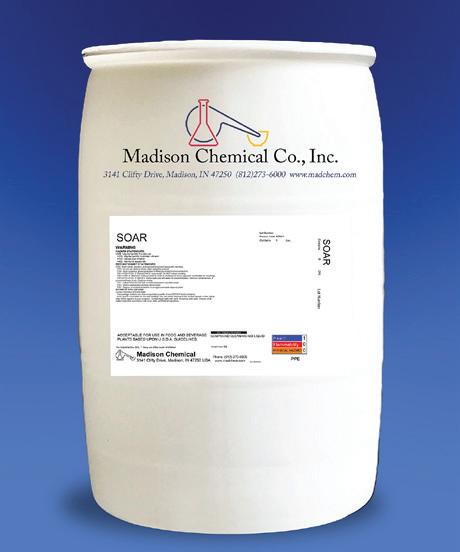
SOAR HF cleaner

Madison Chemical introduces SOAR HF, a unique high-foaming, liquid acidic cleaner designed to penetrate and remove rust, oxides, calcium carbonate and other types of scale, stains and deposits without harmful fumes. With high foam characteristics, SOAR HF is easily applied to difficult-to-reach areas. It is ideal for cleaning metal, plastic, glass, concrete floors, ready mix concrete trucks, pulp and paper mills and machinery, toilet bowls, automotive wheels, boat hulls, and more.
Madison Chemical
Sensaphone IAQ Monitoring Sensors
Sensaphone offers a range of sensors to assist facility operators and managers in ensuring excellent indoor air quality. These sensors monitor various conditions including temperature, humidity, carbon dioxide, carbon monoxide, airflow and smoke levels. Compatible with most Sensaphone monitoring devices, the sensors provide essential alerting and data logging capabilities. Should a sensor detect readings surpassing or falling below preset thresholds, the monitoring device sends immediate notification to users. The combination temperature, humidity and CO2 sensor uses a highly accurate and reliable dual-channel non-dispersive infrared (NDIR) sensor to monitor CO2 levels, a precision thermistor to monitor temperature, and a thermoset polymer-based capacitive sensor to measure humidity levels. Sensaphone

Hadrian Phenolic Toilet Partitions

Hadrian’s new phenolic partitions put sophisticated style in even the most demanding environments. They’re an upgrade to the everyday in every way –including design, durability and privacy. Offering the ultimate in privacy and versatility, phenolic partitions are ideal for all-gender and unisex restrooms. They have the option for extended heights and seamless continuous channel hardware, while no-sight doors and pilasters are standard.
Hadrian



28 HPAC ENGINEERING MAY/JUNE 2024
WHERE FACILITY CHALLENGES FIND SOLUTIONS
NORTHERNCALIFORNIA
August 21-22, 2024
Reno, NV NORTH TEXAS
October 29-30, 2024
Irving, TX
October 9-10, 2024
Santa Clara, CA

























O W N E D & P R O D U C E D BY: facilitiesexpo.com
RENO
Powerful Directional Airflow
Greenheck's


AD INDEX












MARKETPLACE ADVERTISER WEBSITE PAGE NO. AAON ................................................................................................................. WWW.AAON.COM/FIND-A-REP .................................................................... 31, BC ASPE............................................................................................................................. EXPO.ASPE.ORG....................................................................................... 26 BRADFORD WHITE ........................................................................................... WWW.BRADFORDWHITE.COM...................................................................... 17, 31 DAIKIN COMFORT TECHNOLOGIES WWW.VRVEMERION.COM 3 EVERGREEN TELEMETRY WWW.EVERGREENTELEMETRY.COM 16 FIELDPIECE INSTRUMENTS WWW.FIELDPIECE.COM 16 FLUID LINE PRODUCTS WWW.FLUIDLINEPRODUCTS.COM 11 GREENHECK WWW.GREENHECK.COM IFC, 30 LAARS.......................................................................................................................... WWW.LAARS.COM ................................................................................ 12,31 LENNOX COMMERCIAL ................................................................................. WWW.LENNOXCOMMERCIAL.COM ........................................................................ 13 LIBERTY PUMPS WWW.LIBERTYPUMPS.COM 9, 30 NAVIEN NAVIENINC.COM 7 RHEEM HEATING & COOLING RHEEM.COM/ENDEAVOR 1 SHORTRIDGE INSTRUMENTS WWW.SHORTRIDGE.COM 18, 19 TACO WWW.TACOCOMFORT.COM 5, 31
©2024 Greenheck
DDF destratification fans drive warm air near the ceiling down to occupant level to conserve heat, improve comfort, and take energy savings to new heights. Specify with Confidence. Specify Greenheck. 2406HPAC_Greenheck_MKPL.indd 1 4/10/24 2:06 PM Compact.The Model 406 Drain Pump . Small compact size . Fits in tight areas . Quiet performance . Upper and lower inlets . Attractive appliance-style design 2406HPAC_LibertyPumps_MKPL.indd 1 4/17/24 1:46 PM







•













2402HPAC_AAON_MKPL.indd 1 1/17/24 10:25 AM Discover the LAARS® FT Series Commercial Boiler: ©2024 Laars Heating System Co. All rights reserved. Learn more today: laars.com/CommercialWallBoiler
399 MBH and 301 MBH sizes
Up to 10:1 turndown and 95%+ thermal efficiency
•
•
Converts from wall to floor with optional stand
DHW Smart PriorityTM 2406HPAC_LAARS_MKPL.indd 1 5/16/24 2:35 PM KEEP YOUR SYSTEM CLEAN WITH CAF Flow-Through Expansion Tank –for potable water systems Increase System Safety
Precise Flow Channeling Through Patent Pending Head Design • Discourages Legionella & Other Bacterial Growth • NSF/ANSI 61-G Certified & Listed • Robust stainless steel heat exchanger for longer life • Residential & Commercial applications (Indoor/Outdoor) • Cascade and common venting between standard and recirculation models Infiniti® GS & GR Tankless Gas Water Heaters THE ULTIMATE TANKLESS SOLUTION Learn More ©2024, Bradford White Corporation. All rights reserved.
•
•

Direct Air Capture Gaining Investors, Momentum
An update on this negative-emissions technology finds that carbon capture facilities are emerging as real allies in accelerating CO2 removal.

Larry Clark
A regular contributor to HPAC Engineering and a member of its editorial advisory board since 2012, the author is a principal at Sustainable Performance Solutions LLC, a south Florida-based engineering firm focusing on energy and sustainability. Email him at larry@ sustainflorida.com.
Abit more than three years ago, in February 2021, I wrote here about Direct Air Capture (DAC) as an emerging negative-emissions technology (NET) and briefly mentioned several DAC developers.
At that time, one of them, Swiss-based Climeworks, already had claimed to have 14 DAC facilities, including the world’s first commercial operation. In a follow-up article in July 2022, I later noted that Climeworks had broken ground in Iceland on Mammoth, its newest and largest DAC facility to date. According to the developer then, when operational, Mammoth would remove 36,000 tons per year of CO2. That would be nine times the capability of what was then the world’s largest facility, Orca, which removes 4,000 tons of CO2 per year.
After demonstrating the success of Orca, Climeworks was able to raise $650 million for the development of Mammoth, and the company expressed plans to expand the technology to millions of tons of capacity by 2030, and a gigaton of CO2 capture by 2050. Its process involves collector containers arranged around a central processing assembly, and the energy to operate it is geothermal. Because of their modular design, the collector containers can be stacked to increase capacity.
Another promising DAC developer, 1PointFive, a subsidiary of Occidental’s Low Carbon Ventures business (OXY) announced in 2022 its own plans to deploy 70 DAC facilities by
2035, each with an expected capacity of 1 million tons per year, eventually expanding to 135 DAC facilities. BlackRock, one of the world’s leading providers of investment, advisory and risk management solutions, announced last year that it is investing $550 million to develop OXY’s STRATOS DAC facility (above). When that becomes operational in 2025, it will have the capacity to capture 500,000 tons of CO2 per year.
According to the International Energy Agency (IEA), in order to meet its Net Zero by 2050 (NZE) Scenario, decarbonization of the energy sector and widespread deployment of clean energy technologies, while critical, are not by themselves enough. New technologies, many of which have not yet been identified, will be required, and the rate of scaling up those technologies that have already been demonstrated – like DAC – must be accelerated.
IEA pointed out in its Direct Air Capture 2022 report that “with adequate policy support”, DAC deployment could nearly reach the levels required in the NZE Scenario. However, IEA also noted in a separate report that, “even with new technologies, some residual emissions will remain because sectors such as heavy industry and aviation are harder to decarbonize, and therefore there is an unavoidable need for carbon removal.”
In other words, even if existing emissions targets are met, there will still be a need for CO2 removal using technology-based solutions like DAC.



32 HPAC ENGINEERING MAY/JUNE 2024 CLARK’S REMARKS BY LARRY CLARK, SUSTAINABLE PERFORMANCE SOLUTIONS LLC
1PointFive







LISTEN. LEARN. IN LESS THAN 20 MINUTES.

HPAC ENGINEERING’S MONTHLY PODCASTS




HPAC ON THE AIR


Our monthly Podcast series offers unique and compelling industry insights for engineers in the HVACR market. Each month, we talk with engaging thought leaders and practitioners like ASHRAE’s Bill Bahnfleth and Legionella expert Dr. Janet Stout. Produced by HPAC Engineering magazine and hosted by Editor-in-Chief Rob McManamy, this series is just one of several exciting Members Only features, designed to enhance your HPAC multimedia experience.



More people. More places.







Our highest-performing solution ever, AAON Alpha Class empowers more people in more places to adopt cleaner, more efficient HVAC technology.


TM
























































































































 By DAVID SCHURK, DES, CEM, LEED AP, CDSM, SFP
By DAVID SCHURK, DES, CEM, LEED AP, CDSM, SFP




 By ROB MCMANAMY, Editor-in-Chief
By ROB MCMANAMY, Editor-in-Chief




















































































































